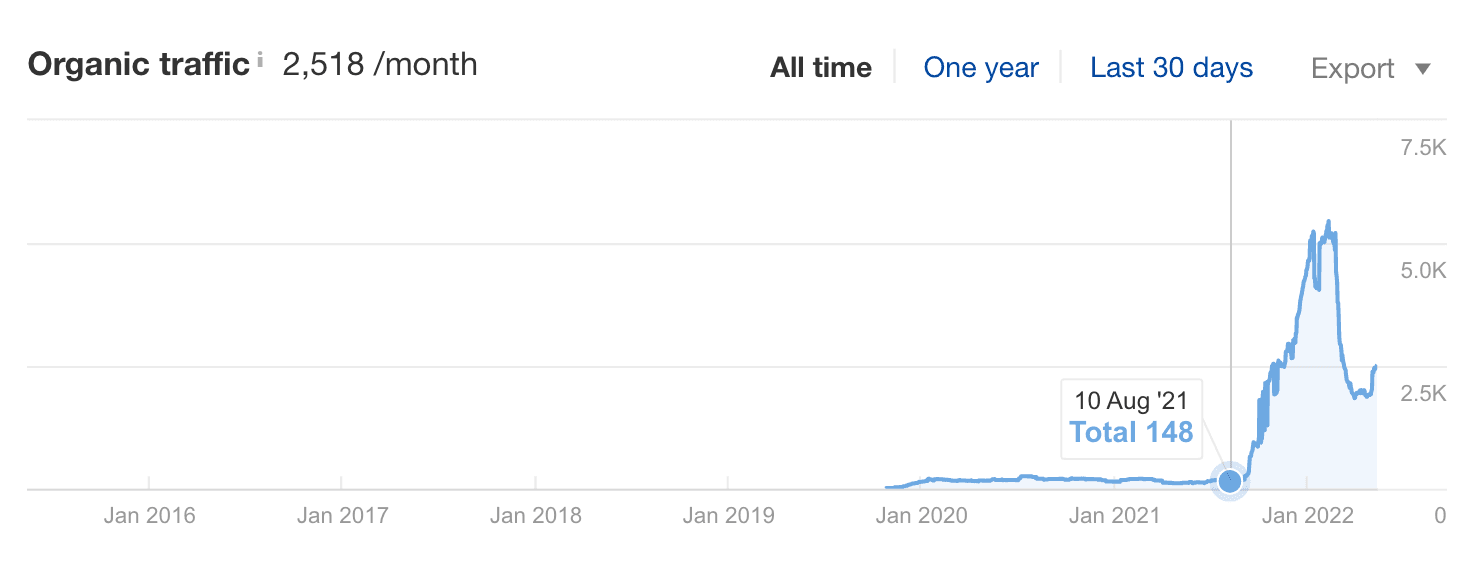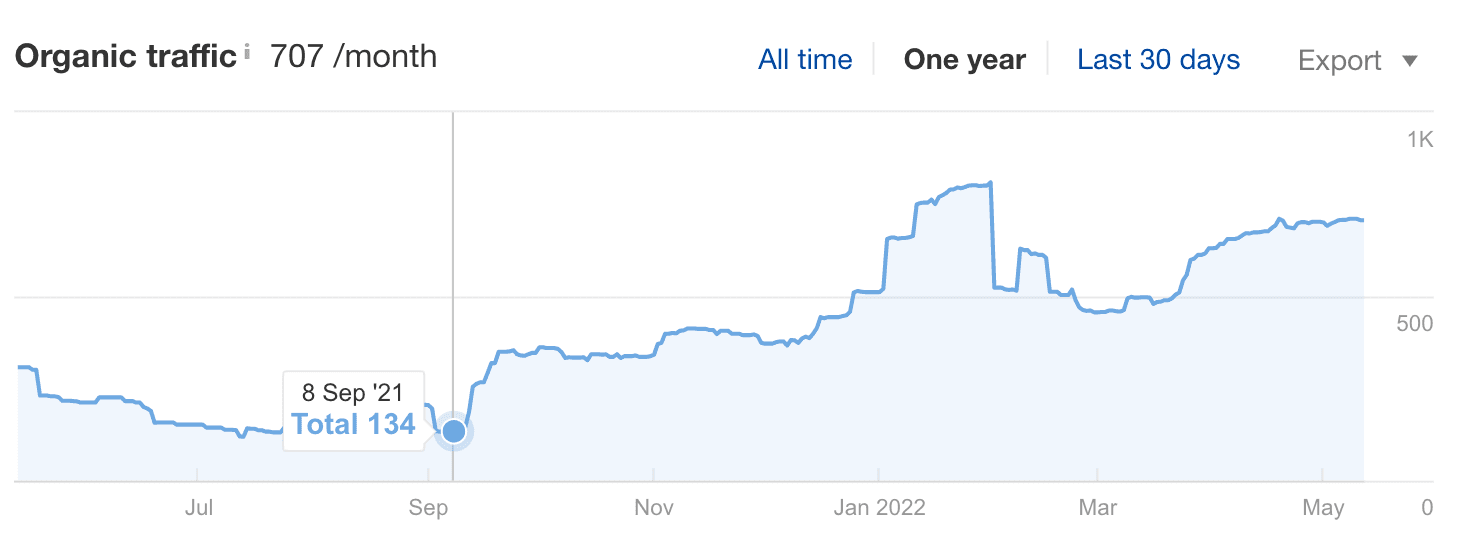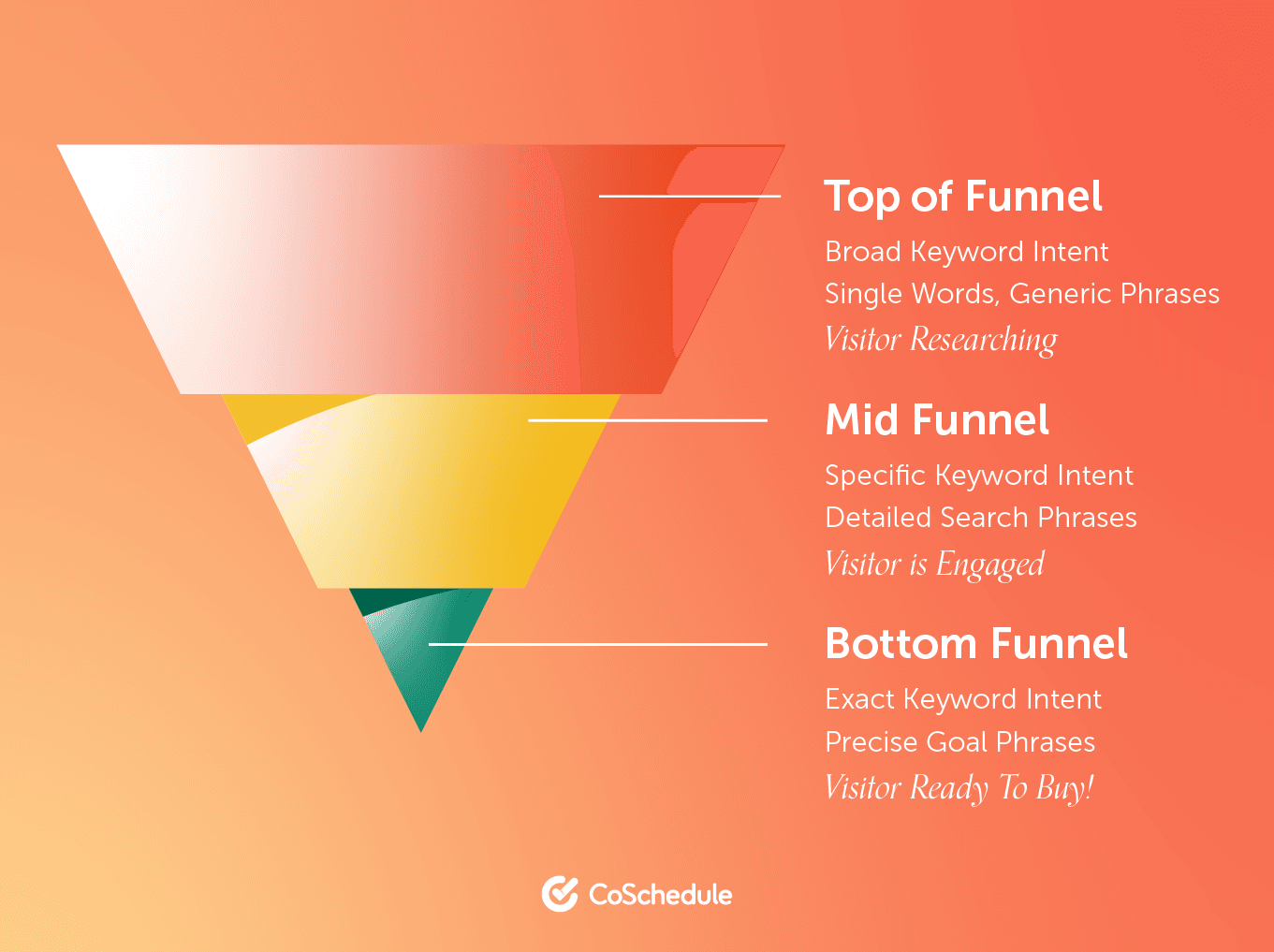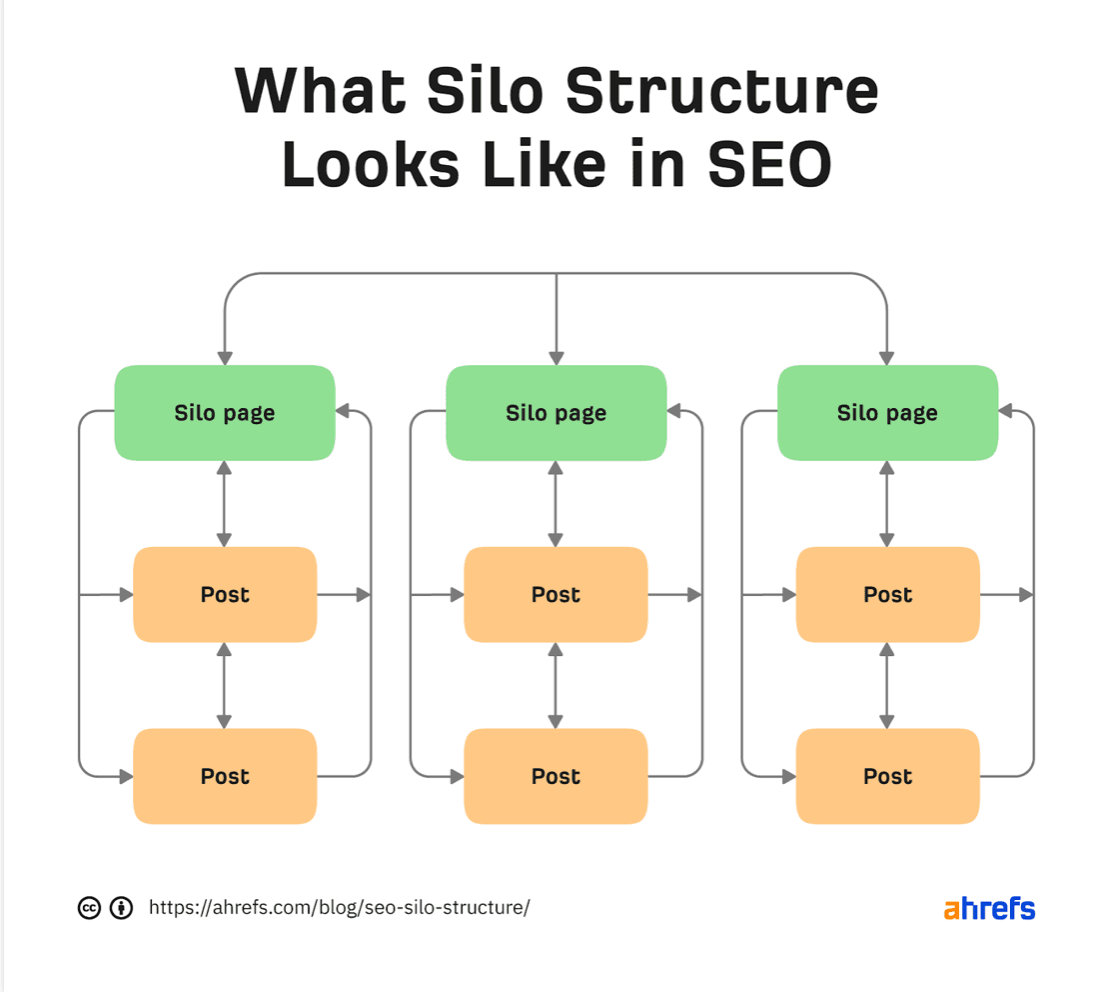Historical Optimization: 3 Tactics To Get Your Organic Traffic Growing Back
 SEO is a long-term game.
Investing in an SEO-focused content strategy can take an average of 6 to 12 months to start gaining traction.
However, there’s good news for businesses whose domains have been on the market for quite some time (3 years and more). You can reach the traffic growth and increase your leads much faster – 2-3 months.
How?
Historical content optimization is the answer.
Picking the right opportunities and optimizing your old content can bring you wins in a few months:
SEO is a long-term game.
Investing in an SEO-focused content strategy can take an average of 6 to 12 months to start gaining traction.
However, there’s good news for businesses whose domains have been on the market for quite some time (3 years and more). You can reach the traffic growth and increase your leads much faster – 2-3 months.
How?
Historical content optimization is the answer.
Picking the right opportunities and optimizing your old content can bring you wins in a few months:

 But let’s start from the beginning!
But let’s start from the beginning!
What Is Historical Content Optimization?
Historical content optimization is an SEO strategy focusing on optimizing older website content to drive more traffic. This SEO strategy includes a variety of tactics, for example:- Refreshing old content to align with search intent
- Improving content quality for E-A-T (Expertise, Authoritativeness, and Trustworthiness)
- Improving the on-page SEO
- Optimizing the page for rich snippets
- Optimizing images for search
Recommended Reading: Content Optimization: How to Help Your Content Succeed in 12 Steps
When Do You Need Historical Content Optimization?
It’s generally a good SEO practice to conduct a content audit at least once a year and see what old content to optimize: what pages to keep as is and which pages to update or remove. Here are some signs when you should consider historical content optimization:- You keep seeing more competitors in SERP (Search Engine Results Page) targeting your keywords and outranking your positions;
- You notice more paid ads in your niche, which demonstrate that your competitors find specific keywords worth paying for;
- You experience impressions dropping – a sign that Google doesn’t value your content as high as it used to.
Why Do You Need Historical Content Optimization?
If the signs above relate to you, here are other reasons historical content optimization is a good SEO strategy for mature websites. It helps to:- Spend fewer resources: it’s easier to update a page with some content on it, and sometimes simply adding a few proper headings is enough to improve the quality;
- Rank faster with updated content: you're starting with a page that already has some degree of page authority or backlinks;
- Expect conversions faster: if updates are implemented successfully on the pages with a good conversion rate, it’s a matter of bringing in more traffic to the right places.
Getting Started With Historical Content Optimization
Here are 3 ways to begin historical optimization:- Identify the underperforming blog posts with high business potential
- Optimize high-traffic articles for a better conversion rate
- Find missing high intent keywords to complete an SEO silo
1. Identify The Underperforming Blog Posts With High Business Potential
If you notice the pages that used to bring conversions don’t deliver such results any longer, the issue might be losing your ranking positions. Many reasons explain a drop in conversions, including outdated content that may not align with search intent, slow page speed, and UX issues. Your goal is to identify the pages that have performed well historically and push them back up in SERP. Another condition is to update only the pages with high business potential (potential to convert leads). Here are some tips on what to do with the underperforming pages:- Go to your Google Search Console and check the Performance report: set a range for the last year and filter out pages by ‘Position.’
- Pages with a ‘Position’ between 11-30 are the articles on pages 2 and 3 of Google search results and where you should start.
- Out of all the pages shown in GSC, select only the ones with high potential. Go to Google Analytics and check how many conversions these URLs used to bring in during the last year. You can do this by going to Acquisition > Organic > Landing Pages > see the Conversion Goal. If there are low or zero conversions, it might not be worth spending time updating a page.
- Once you identify the potential pages, check them via Google Search Console and see the top query for each page;
- Analyze SERP and see how difficult it is to rank for this query with your current URL: what type of search intent this type of query satisfies, what on-page SEO elements are missing, and how many backlinks you have to build;
- Prioritize low-hanging fruit; pages that take less effort to update and have high business relevancy.
2. Optimize High-Traffic Articles For Better Conversion Rate
You’ve got a set of pages ranking in the top SERP positions and generating organic traffic, though not converting as many leads as you would expect. It’s still a good foundation. Not all content pages are tailored to convert leads immediately – your website visitors arrive at the pages with different intents and journey stages. Content production should cover TOFU, MOFU, and BOFU content for different purposes. BOFU content is more likely to convert visitors to leads and can provide you with a decent amount of organic traffic. TOFU content is good for attracting many visitors because the terms the TOFU content covers are more generic and popular among searches. Some things you might try to convert more visitors from your top traffic TOFU pages include:
Some things you might try to convert more visitors from your top traffic TOFU pages include:
- Create a custom landing page covering a specific use case. For example, if you have a blog post educating the website visitors on ‘OKR vs. KPI”, you could tailor the landing page for this specific use case and explain how to achieve KPIs with OKR software. This way, you’re presenting potential customers your product from a more familiar angle – the one they actually searched for.
- Offer a downloadable template and give a preview of it. Also, consider creating a CTA to use your product as an alternative to using the template. This way, you’re giving the template for free while offering an alternative (hopefully, better) way to solve a problem.
Recommended Reading: How to Understand the Marketing Funnel and Create Content Customers Need
3. Find Missing High Intent Keywords To Complete An SEO Silo
Focusing only on historical optimization without creating new content is not healthy for your website authority either. However, there’s a way to create new content and a strong connection with your old content. They call it a silo structure in SEO. It’s a website architecture where you group, segregate, and interlink content about a specific topic. This process helps Google find your pages more efficiently and boosts your ranking for specific keywords. The idea is to create more content to cover missing keywords around a particular topic, build more contextual internal links, and dominate the SERP with all relevant to your business queries.
Some topic clusters and keywords you could use to shape your SEO silo could include:
The idea is to create more content to cover missing keywords around a particular topic, build more contextual internal links, and dominate the SERP with all relevant to your business queries.
Some topic clusters and keywords you could use to shape your SEO silo could include:
- Find additional keywords, desirably high-buying intent, to fill in the missing gaps and create a series of articles that zoom in on specifics of the topic (clusters): best X software, X template, X examples, how to do X, X vs. Y, alternative to X;
- Create a pillar page that covers one complete topic and would serve as a long-read ultimate guide on a topic;
- Build one of your cluster pages as a landing page on which visitors can sign up for your product;
- Link a series of articles to the pillar or landing page and vice versa.


